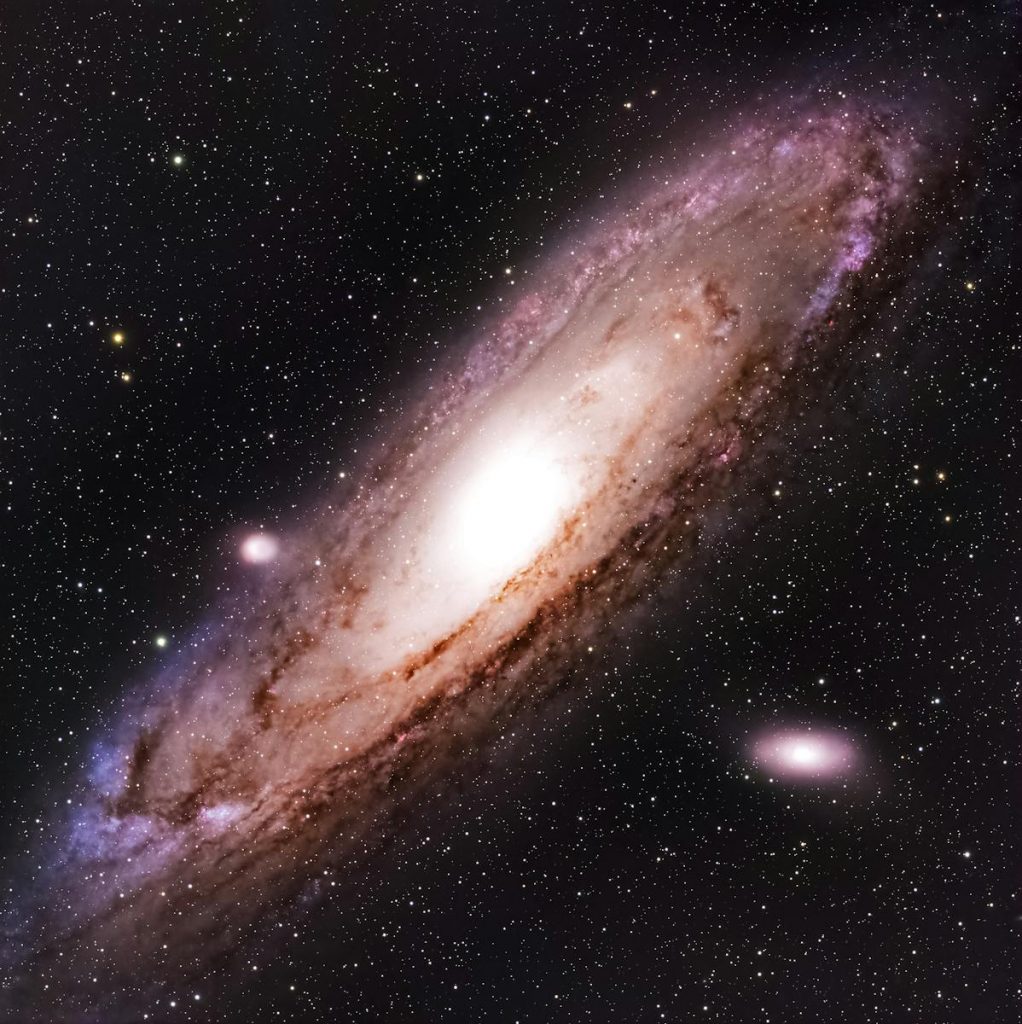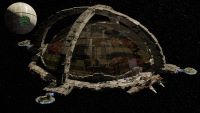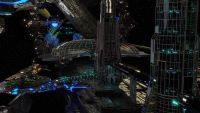The Human Empire
This foreword courtesy of Galactic Librarian Oring Utan the 547th
Greetings, prospective traveler! Whether you are a future historian, non-Human or have been out of touch for many centuries, I shall now provide you with a short summary of Humanities spread from a single planet into one of the largest and most organized civilizations (both arguably, of course and definitely not the most technologically advanced) in this region of the Galaxy.
Full disclosure; I myself am a Librarian of the Cthonic persuasion, and since manifesting myself in your dimension over 700 years ago I became fascinated by the creatures that up until that point had been merely a potential food source. I was part of the initial first-contact debacle in which many Humans were unfortunately devoured following your displacement weaponry experimentation, but was also part of the delegation that eventually sued for peace and brokered the current so-called Non-CHOW (Consumption of Humans unless Overtly Willing) treaty. In defense of my fellow Cthonians, I would like to point out that as it is well known (by most, at least) that true consciousness cannot be destroyed, by our definitions no Humans were actually killed; they were simply subsumed into our plane of existence, with temporary loss of form (as my symbiotic Human host has attested to a number of times; and might I add that you would likely be surprised to learn how many apply for subsumption on a yearly basis!). But enough about us. If you are of a queasy disposition with regards to spatial geometry you may bypass the next sections that deals with the physical structure of the Empire.
Time and the Near Earth Diplomatic Situation
The 24-hour day remains the standard for timekeeping, with a year also referencing exactly 365 days for the purposes of light year calculations. In-system, the AU, or Astronomical Unit (the average distance from the Earth to the Sun or ≅1.5×108 km) is commonly used as the distance reference unit. The ‘Parsec’ is used for larger distances such as between neighboring star systems, and is equivalent to 3.26 Light Years (≅206k AU), and of course the kiloparsec (kpc) for measuring larger intra-galactic distances is still in widespread use. The current size of the Human area of influence is approximately 1203LY, further segregated into 27 cubic 40LY sectors, each with 8x20LY3 subsectors, 8x10LY3 sub-subsectors and finally 10 individual light year segments. This area is centered on Old Earth at sector 14(n), where the Ecocracy has cut themselves off from the rest of humanity out to Teegarden’s star at 12.497 Light Years From Earth(LYFE), with a strictly enforced shoot to kill (STK) hard-border policy. Beyond this there is a 2LY DMZ with a heavily armed Ecocracy starbase circling TZ Arietis at 14.578LYFE which is the Ecocracy’s single point of contact for all trade and diplomatic relations. For help visualizing the 3d area please refer to Stars at Chrome Experiments for in interactive 3d map and quick tour of local space(you will initially need to zoom in to find ‘Sun’ (Sol)).
Moving Outwards
The first Empire facility of any note close to this area is at Ross-780 at 15.239LYFE, an Imperial Navy (IN) Listening Outpost which monitors the ongoing conflict between the Ecocracy and the Trumpire, itself also acting as a neutral zone for these two parties to discuss arising issues and even occasionally attempt conflict resolution. Humans as a whole would have preferred a spherical area of influence; however there would have been some inconvenient overlaps with sensitive (unspecified but assumed to be either drive or weapon testing zones) Xeno facilities. The outer edge of border of the area of Human influence is colloquially known to all as ‘The Rim’, and although some outer sectors are in Xeno-territories travelers do not usually require any special dispensations to travel through these as long as they remain within the 120LY3 Human zone. Travelling into Xeno territories beyond the rim may sound interesting, but bear in mind that Xeno facilities may not be able to support carbon-based or even oxygen breathing lifeforms, and that any equipment found may be entirely unsuitable for humans to operate.
Geometry of Space in the Imperium
The Imperial navy uses short code for determining locations in the following format; Sector Letter (using letters from the modified Greek alphabet; Quanta and Heta added) starting with Alpha through Omega, with the 27th sector referred to as & for historical reasons (ampersand) and numbers for further subdivisions (see Sector Table). So, sector Tau-5-3-846 would refer to sector 20, subsector 5, subsubsector 3, 8 light years down, 4 light years across and 6 up. The cubes are always composed of a grid, which if placed down on a surface the ordinal compass points would be pointing out (NESW) from sectors 4(d),8(h),6(f) and 2(b); the next layer up would then be sectors 13(m),17(q),15(o) and 11(k); finally the top layer would be 22(v),26(z),24(x) and 20(t). The numerical subdivisions then follow the same layout with 1,2,3,4 being the bottom layer and 5,6,7 and 8 being the top layer. The central plane of this cube is in alignment with the galactic plane, with sector 11(k) pointing corewards, 17(q) pointing rimwards, 15(o) facing spinwards or upspin and 13(m) facing downspin.
Stars and Solar Systems
Current estimates are between 10-60k stars within this region sporting (with an average of 5 for simplicities sake) approximately 50k-300k planets, most of which are unknown and many of those that are known just number tagged (HD 156384 C, WISE J173835.53+273259.0 etc). Systems generated in-game are assumed to be currently undiscovered ones and known named stars will be used wherever possible.
History of Human expansion

The early days of spaceflight were a slow and arduous task, with many losses and catastrophic failures, yet the so-called transparency wars eventually brought an end to most corporate scheming. Power restrictions and integral information sharing were subsequently integrated into almost every political, military and economic organization which brought a much needed balance to society. The brief Ecowar then cut Earth off from the expanding colonization wave, forcing Humanity to expand outwards into the stars, and by 2258 there was a network of planetary habitats and outposts out to a radius of 12 light years from Sol. As this expansion continued further, so did encounters with Alien races which slowed this progress and forced the development of diplomatic relations, causing a backpressure and the need to form a collective Human identity. Over the following centuries, and with subtle nudges the ‘Athenas Spear’ movement used this gap in Humanities psyche and guided them into a true space-age, forging racial and diplomatic ties that smoothly guided us into the Empire/Imperium political structure we all, for the most part, happily live in today. Asimovian influences deeply embedded into our collective psyche (which also incidentally inspired the initial grouping of Librarians to eventually form the Galactic Library…How would you Humans put it, ah yes…typical bunch of nerds!) along with a latent desire to have a form of ‘Nobility’ in the culture at large also greatly aided these developments. The Ecocracy eventually pushed their boundary out to its current distance and they currently seem uninterested in pushing it further (to the relief of many).
Terminology
The term ‘Xeno’ was officially adopted for factual non-pejorative ‘other than Human’ usage with the term ‘Alien’ denigrating to ‘Events or entities of unknown origin or purpose’ and not now used to refer to any new or recently discovered race. The core Human Imperium now stretches for over 120 light years from end to end with many territorial overlaps, now encompassing creatures so myriad in variety that we have had, by necessity to classify some into rough Earth-analogue stereotypes such as the cringe-worthily named ‘Reptoids’ and ‘Insectoids’. Some with overt similarities are named specifically such as the ‘Taranyds’, with Far-Xeno (Least Human-Like) races such as void entities, Cthonics and Photoids being the least understood (despite my best efforts).
Travel Mechanics, movement rates and FTL technologies

For inter-sector travel the standard unit of travel is the PL, or Point-Light, which refers to a travelling rate of one-tenth of a light year per day, adopted due to the relationship to the most common standard engine specifications (Imperial Standard sector Star Charts use either a 1:1, 1:2 or 1:3 hex/PL format). To give a basic idea of the range as relates to standard vessels, a slow cargo scow, ore transporter or heavy commercial transport vehicle would have a rate of 1PLD (1 tenth of a light year per day), hold between 1k-2k units or more of fuel and would be able to travel a maximum distance of 10LY (which would take 100 days). A faster light transport or military frigate would be rated at between 2-3PLD yet only require 200-400 units of fuel and have a range between 10-20LY depending on the exact configuration and load. A reasonably fast Scout cutter, designed for scouting only and not combat or goods transport is rated at between 3-4 PL’s (depending on its current Tech Level, 1-3), holds 200 units of fuel and can travel up to 40LY unladen. The fastest military test vehicles using Human drive technology are reportedly able to travel at rates up to 9PL’s, however at rates higher than this the energy cost relative to distance travelled is unsustainable. The mathematical calculations higher than this rate of travel within μ-space also devolve into chaotic soup, although the Federation of United Scientists (FUS) have indicated that this may be an indication of another boundary layer that may lead to further breakthroughs and faster travel. Larger Ships such as Battlecruisers are able to form warp conduits using Quantum Singularity Penetrating Long Range Jump Technology (QSPLRJT) that extend up to 9 light years, however highly accurate information regarding coordinates and energy fields present at the destination are required in order to successfully transition, necessitating the use of a spotter ship or ‘opener vessel’ at the target destination. Xeno FTL technologies are able to bypass many Human technical limitations, although they are usually unwilling to share their construction methods. Under certain conditions it has been known for them to install upgraded drive cores into ships of extremely trusted allies, although this is an uncommon occurrence. For more detailed FTL mechanics and travel hazard charts please refer to SABRE documentation.
Territory, measurement and distances
As previously mentioned, if you have been travelling on a Guild Highliner or other Lighthugger class vehicle having just recovered from a few decades or more in cold sleep, you may be out of touch with current Galactic Standard Units (GSU’s), and if so, please refer to the below notes on units and measurements used throughout the Imperium.
4-H System Standard Units of Measurement and Population values
The H in this case refers to Protium, which is the lightest and most common isotope of Hydrogen, and rarely in the Galactic community something all can agree upon.
| Time for a… (HT) | …Photon to travel the diameter of Protium: 3×10-14s | Energy (HE) | Energy required to raise Protium from ground to first excited state;10.2 eV | ||
| Distance (HL) | Diameter of Protium: 10-8cm | Mass (Hm) | Protium mass: 1.7×10-24g | ||
| Estimated inhabited worlds | 473,000 This figure is based on xeno census data | Imperial Core Territory | 1203 LY centred on Earth | ||
| Current human pop. | 2.128×1015 (Highly variable) | Numbering system | Base 12* org or Binary Mech | ||
| Estimated Xeno worlds | 4.78 Million Based on current diplomatic information | Current comms standard | Ipv 12 | ||
| Galactic Xeno population | Estimated>1024 At least | Galactic subnet frequency | Varies by region and race | ||
The 4-H system is the universal reference system with all Imperial devices translating to and from Imperium Standard; a Planck-scale system was also briefly considered, the main argument against its use was that it was simply too small (the 4-H system at least has reasonably measurable quanta). There has always been opposition to a universal galactic coordinate system, as every race tends to choose their galactic X- axis to stretch from their home planet, through the center of the Galaxy (generally accepted as Sagittarius A) and carry on out the other side (generally with the positive direction pointing corewards). The commonly used ‘S’ value (Y-Axis) is taken from whatever point you are at, with ‘Upspin’ (Positive Y) being clockwise and ‘Downspin’ (Negative Y) counter-clockwise. What all have at least most all have agreed upon is that ‘up’ (Z-Axis) is where you are at if viewing the galaxy from above looking down on a clockwise rotation, with the Z–axis being a line extending (up in a positive X direction) through this center.

The standard non-verbose description is as follows:
Galactic Coordinate System:
Origin: The Sun is at the origin (0, 0, 0).
z-axis: The positive z-axis points toward the North Galactic Pole, in the constellation Coma Berenices.
x-axis: The positive x-axis points toward the galactic center in the constellation Sagittarius. This is the direction referred to as “coreward”.
y-axis: The positive y-axis is in the direction of the galaxy’s rotation, toward the constellation Cygnus.
With a few exceptions, Humans are mainly located on the Orion spur of the Perseus arm, the small gap between the two currently undergoing a massive joint Human-Xeno construction project to bridge it by using experimental ‘Acceleration Highway’ technology through μ-space. Information regarding the inhabitants of the neighboring Sagittarius arm is unavailable to the general public and classified for reasons unknown to most individuals (wink wink). For further guidance in your adventures contact the Space Master in charge of your sector through the appropriate GalNet forum, where you may also find guidance for your respective faction. Here you can also download a handy Citizen-Hazard protection-Ability-Reputation-Skill-Human to species relations-Equipment-Experience-Tracking document that will help guide you on your travels. I shall enclose a link here for your convenience.
We hope this guide has been of some use and wish you the best of fortune in all your adventures; may our paths yet cross, Utan.
For any further queries please go to the Galnet Sponsored Community Engagement Program end either check with your faction representative at Imperial Command HQ or your Spacemaster for your sector.
Well, that was possibly a bit more than I needed to know. Don’t know if I even want to meet that Utan, seems like a bit of a nutter if you ask me. Ill come back to that a bit later. First I’m going to put the info I have so far into that charsheet form then check out that engagement program and see if I can make any progress. If you find my body before I am rescued, hope this helps you out.
You drop the ancient wrist-term that you found barely attached to a moldering skeletal corpse that has been chewed on by the local fauna, whispering a barely audible exclamation of gratitude. You then proceed to the engagement program link, activate your ‘Thumb’ and are picked up the next day. You are not an ignorant fool who had his mind wiped for whatever reason, you know exactly who you are and what you are doing. You also know how you got stranded here and nothing is going to stand in your way of getting back at those who betrayed you.



















